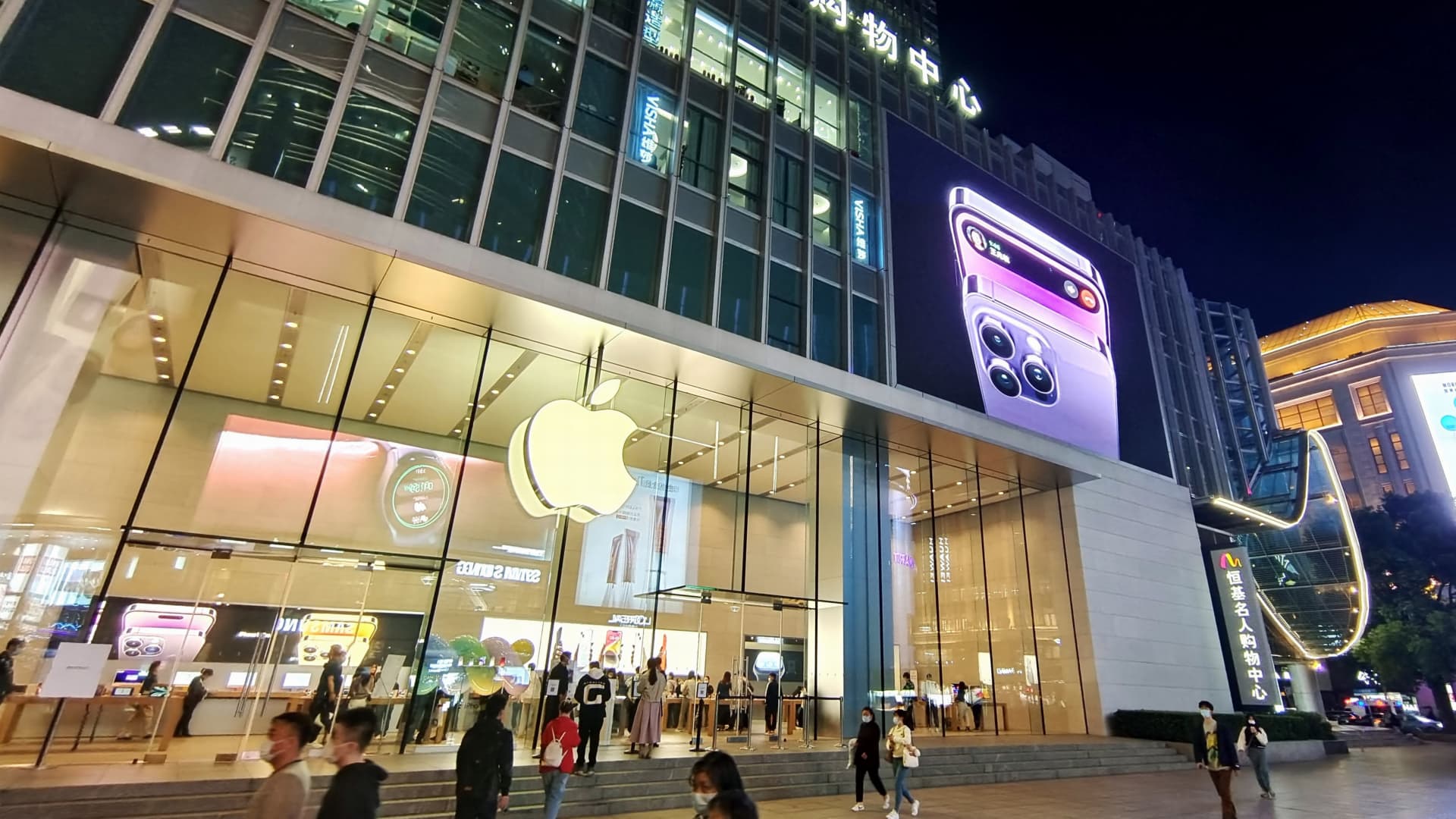IPhone 14 Pro models are promoted outside Apple Inc’s flagship store in Shanghai, China, October 13, 2022.
CFOTO | Future Publishing | Getty Images
Chinese consumers are on average spending more on smartphones than ever before, according to new data, which bodes well for U.S. giant Apple in a critical market for its expensive iPhones.
The average selling price of smartphones in mainland China was $450 last year and is expected to keep growing this year, market research firm Canalys said in a report last week.
“We expect a rise in ASP in the following quarters, primarily driven by Apple’s new launches and the development of Chinese vendors’ high-end strategy which offers wider flagship choices,” Lucas Zhong, research analyst at Canalys, told CNBC via email.
International Data Corporation told CNBC that the average selling price for smartphones in China was nearly $470 in the first quarter of this year, up about 5% year-on-year. It was the third consecutive quarter of year-on-year ASP growth.
This comes even as smartphone shipments in China continue to fall amid weak consumer spending.
The rise in ASP signals that the high-end part of the smartphone market remains resilient and that’s where Apple competes. In China, phones priced in the $600 to $800 segment and $1,000 to $1,600 band recorded growth in the first quarter of the year, the latest available data shows, even as the overall smartphone market fell nearly 12% year-on-year, according to IDC.
This trend is positive for Apple, which was the only vendor in the top five in China to record growth in shipments in the second quarter, Canalys said.
Apple’s ecosystem with its iOS operating system and accessory hardware like the Apple Watch have “created a formidable moat to fend off competition from Android players,” Canalys’ Zhong said.
Huawei challenge
Apple’s main challenger in the premium end of the market is likely to be Huawei, the company that was once the biggest smartphone player in the world before U.S. sanctions cut it off from critical technology that crippled its consumer business.
While Huawei’s overseas business has shrunk considerably, it is still launching phones in China aimed at the high-end part of the market.
Huawei and Apple dominate the premium smartphone market. For handsets priced between $600 and $800, both firms have a 56% market share, and for those priced between $1,000 to $1,600, they command a 94% market share, IDC data shows.
Huawei returned to the top five smartphone makers by market share in the second quarter.
To gain a foothold in the premium market, Chinese smartphone giants have been launching foldable phones — smartphones where the screen can fold in half. These are often the most expensive phones on the market.
Huawei launched its Mate X3 foldable this year while Honor, a spinoff company from Huawei, released its Magic V2 device. Other Chinese smartphone makers including Xiaomi also have their own foldable offerings.
Apple doesn’t have a foldable phone yet but analysts say its strong customer base can help it stay competitive in China.
“The key challenge in the (more than) $600 segment will be from Huawei as the vendor is a premium brand as well as the nation’s pride,” Will Wong, senior research manager at IDC, told CNBC via email.
“The foldable products are a key tactic of the Android vendors to challenge Apple in the premium segment now, but the strong consumer stickiness of Apple as well as the high cost (in terms of time and effort) of leaving Apple’s ecosystem will be a key fortress to defend itself from the new form factor.”
Image and article originally from www.cnbc.com. Read the original article here.

